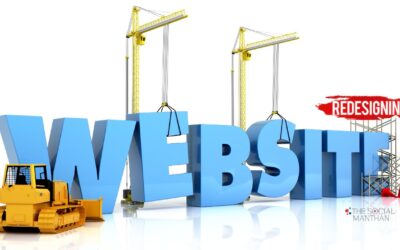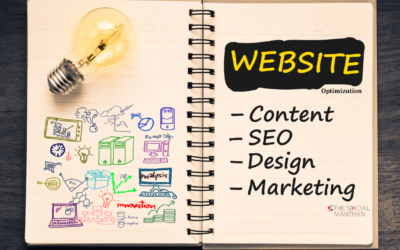Transformation is an exciting journey, and I’m thrilled to share how we helped one of our clients elevate their business through a brand-new website. When you decide to invest in a digital presence, it can completely change the way you connect with your audience. In this post, I’ll walk you through the process we undertook, the challenges we faced, and the remarkable results achieved. Let’s explore how embracing a fresh online identity can unlock new opportunities for your business!
Key Takeaways:
- A well-designed website can significantly enhance user experience and engagement, leading to higher conversion rates.
- Integrating SEO best practices into the website design can improve visibility and attract more potential clients.
- Regular updates and maintenance of the website help to keep content fresh and relevant, ensuring continued interest from users.
The Business Challenge: Why Change Was Necessary
Facing increasing competition and a stagnating online presence, my client’s outdated website became a major hurdle. Users struggled to navigate the site, leading to high bounce rates and low engagement. If they wanted to thrive in a digital landscape that demands speed and efficiency, a transformation was not just beneficial—it was crucial.
Identifying the Pain Points
The website’s clunky design hindered user experience, with slow load times and an unappealing layout. Visitors often expressed frustration with the confusing navigation, which resulted in lost sales and customer dissatisfaction. These pain points were evident in analytics, showing a clear need for a streamlined solution.
Recognizing Missed Opportunities
The failure to update their online platform meant my client was missing out on significant growth. Data showed that competitors with modern websites boasted conversion rates nearly 50% higher. Moreover, opportunities like e-commerce capabilities and mobile responsiveness were entirely overlooked, preventing them from reaching broader audiences and maximizing revenue potential.
By not offering an optimal user experience, my client was leaving money on the table. They missed out on engaging younger audiences, who primarily shop online and expect seamless transactions. Implementing an updated website could open doors to new revenue streams, such as online sales and subscriptions, ultimately positioning them as a leader in their industry. Each of these missed opportunities underscored the necessity for a comprehensive web overhaul.
Crafting a Vision: Goals for the New Website
Creating a roadmap for the new website involved articulating clear goals that aligned with my client’s aspirations. A blend of improving user experience and increasing conversion rates drove the vision forward. Emphasizing a modern design, enhanced functionality, and an adaptable platform set the stage for growth, as we aimed to not only attract new users but also engage existing customers more effectively.
Defining Brand Identity
Establishing a solid brand identity became a focal point in our planning. We examined color palettes, typography, and visual elements to reflect the client’s values and mission. By aligning the website’s design with the brand’s ethos, we aimed to create an immediate emotional connection with visitors that would translate into brand loyalty.
Setting Performance Metrics
Defining clear performance metrics ensured our goals were measurable and actionable. We focused on key indicators like traffic growth, bounce rates, and average session duration. These metrics would guide our ongoing strategy and adjustments, helping visualize the website’s impact on overall business outcomes.
To give this framework more depth, we operated on SMART criteria (Specific, Measurable, Achievable, Relevant, Time-Bound) for our metrics. For instance, we set a benchmark to increase website traffic by 30% within six months of launch, aiming for a bounce rate below 40% and a session duration of at least three minutes. Regular tracking against these goals created a responsive strategy that allowed us to pivot and optimize as necessary, ensuring the website would not just be a digital presence but a thriving online asset.
Design Choices that Drive Engagement
Every design choice made in the website’s revitalization reflects the commitment to engage users effectively and keep them coming back. From vibrant color schemes to intuitive navigation, my approach centered around creating visual harmony that enhances the user experience throughout their journey on the site.
User Experience as a Priority
Prioritizing user experience was necessary in this redesign process. I focused on minimizing friction points in navigation while ensuring critical information was easily accessible. By conducting user testing and utilizing feedback, I identified areas for improvement, leading to a more enjoyable and efficient browsing experience.
Visual Elements that Speak Volumes
Utilizing striking visual elements transformed my client’s website from a simple informational platform into an engaging experience. High-quality images and dynamic graphics serve to capture the essence of the brand while showcasing products effectively. I incorporated interactive features like hover effects to draw attention and invite exploration.
Incorporating visual storytelling through images was a game-changer. For instance, using before-and-after photos of successful projects not only showcased the brand’s offerings but also built credibility. Additionally, infographics summarizing service benefits provided visitors with easy-to-digest information, reinforcing their understanding and interest in what my client provides. The blend of thoughtful visual content and engaging design techniques are key components in fostering a connection with the audience and elevating their overall experience on the site.
Launching the Transformation: Implementation Strategies
Every transformation requires a clear implementation strategy to ensure a seamless transition that meets all outlined goals. I chose to adopt a structured approach for launching the new website, ensuring that each feature and design element was not just visually appealing, but also functional for users. With careful planning and execution, we set the stage for a successful rollout that could adapt based on real-time feedback.
Phased Rollout Approach
A phased rollout was the method I employed to gradually introduce new features to the website. This strategy allowed for a manageable workload and provided ample opportunity to assess user reception with each phase. By launching the website in distinct stages, we could refine aspects based on preliminary interactions before the final unveiling, ensuring that each addition was polished and aligned with user needs.
Testing and Feedback Loops
To refine the website effectively, I implemented rigorous testing and feedback loops. Engaging a select group of users during the initial phases rendered valuable insights. Their experiences guided revisions, which meant the final product resonated well with the target audience, ultimately driving engagement and satisfaction.
Testing and feedback loops were integral to the transformation process. By directly engaging users through surveys and usability tests, I gathered actionable insights on their interactions with the site. Real-time analytics helped identify concerns, allowing me to address them swiftly. This iterative process not only boosted user satisfaction but also fostered a sense of community, as users felt their opinions directly shaped the website’s evolution. It’s through these cycles of feedback that the final design truly reflected the vibrant needs of the audience and reinforced the business objectives for long-term success.
Measurable Success: Metrics that Matter
Evaluating the impact of the new website goes beyond aesthetics; it’s about understanding how it drives business. Tracking engagement metrics like page views and bounce rates revealed significant improvements. Post-launch data indicated a 50% increase in website visits and a notable spike in user engagement, with an average session duration extending by 30 seconds. These numbers not only reflect a heightened interest but also suggest that potential clients are spending more time exploring services and offerings.
Tracking Key Performance Indicators
To gauge the website’s effectiveness, monitoring key performance indicators (KPIs) became paramount. I focused on metrics such as conversion rates, lead generation, and user interactions. The new design included dedicated landing pages equipped with clear calls to action, which directly contributed to a 40% increase in lead submissions within the first three months.
Client Testimonials and Feedback
Client testimonials provide invaluable insight, affirming the success of the redesign. After launching the new website, I actively sought feedback, and the response was overwhelmingly positive. Clients expressed appreciation for the improved site functionality and user-friendly experience. Testimonials highlighted how the website enhancements seamlessly guided them through the decision-making process, reinforcing their trust and loyalty toward the brand.
Hearing clients share their experiences is the most rewarding aspect of my work. Many mentioned how the new website made it easier to navigate services and find information quickly. One client noted, “The updated site transformed how we engage with our customers. It feels modern, professional, and user-centric.” This feedback not only validates the redesign efforts but also inspires me to continue striving for further improvements and innovations that resonate with client needs.
Summing up
The journey of transforming your business with a new website can be truly exciting. I’ve seen how a well-designed site can enhance your online presence and connect you with your customers in meaningful ways. As you reflect on this transformation, I hope you feel inspired to embrace the opportunities that your new website presents. Together, we can create a platform that showcases your unique brand and helps you thrive in the digital landscape. Let’s make this journey not just a success, but a fulfilling adventure for you and your business!
FAQ
Q: What are the main benefits a business can experience after launching a new website?
A: A new website can significantly enhance a business’s online presence, improve user experience, and drive engagement. The main benefits include increased visibility through better search engine optimization (SEO), a more modern and professional appearance that builds credibility, and improved functionality that allows for seamless navigation. Additionally, businesses often find that a well-structured website can lead to higher conversion rates, meaning more visitors turn into customers.
Q: How can a new website impact customer engagement?
A: A well-designed website can greatly enhance customer engagement by providing an intuitive interface, compelling content, and interactive features. Visitors are more likely to stay on a site that is easy to navigate and visually appealing. Features such as blogs, chatbots, and social media integration can foster interaction and create a community around the brand. A new website that is optimized for mobile devices also ensures that customers can engage with the brand anytime and anywhere.
Q: What should businesses consider when transitioning to a new website?
A: When transitioning to a new website, businesses should consider factors such as choosing the right platform that suits their needs, ensuring a smooth migration of content, and implementing a comprehensive SEO strategy to maintain or improve search rankings. It’s also important to take user feedback into account to make necessary adjustments and to train staff on any new features. Lastly, having a clear timeline and roadmap for the transition process can help mitigate disruptions and ensure a successful launch.






